New Page 1
2023
Make Room for Elephants
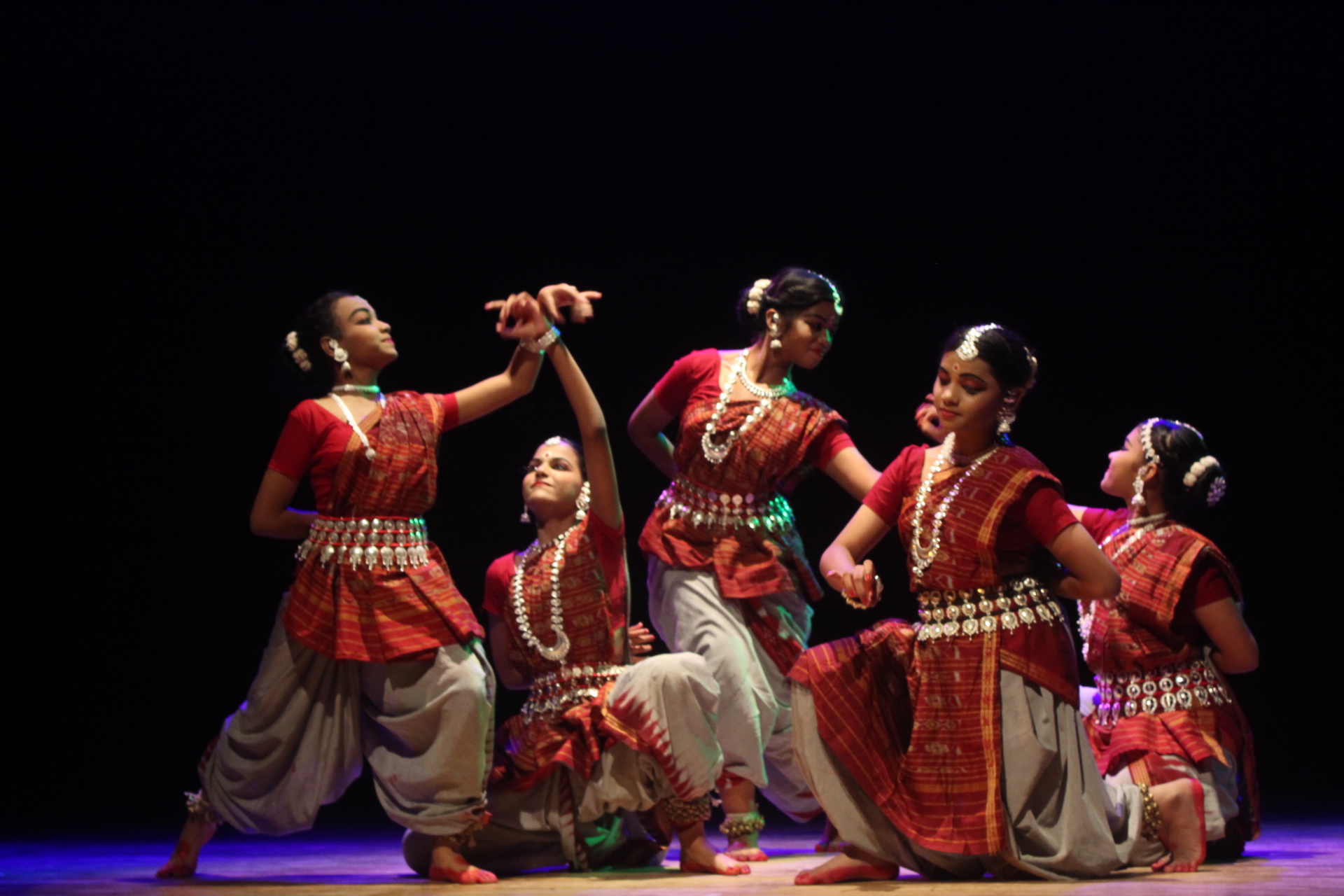
Click on Image for Video Clip
Make Room for Elephants
Based on the homonymous poem by Ruskin Bond, it is meant to inspire sympathy for the animal world.
Choreography: Ileana Citaristii
Music: Annada Prasanna Patnaik
Sharira

Click on Image for Video Clip
Sharira-Based on a traditional poem by Janardana Dasa depicting how beautiful a devadasi feels when she adorns herself with all sort of ornaments and attire and on a modern poem by Devdas Chhotray narrating the ordeal experienced by the two women paraded naked on the road in Manipur early this year.
Choreography: Ileana Citaristi
Music: Sangita Panda
|
2022
Duara Paka Nata
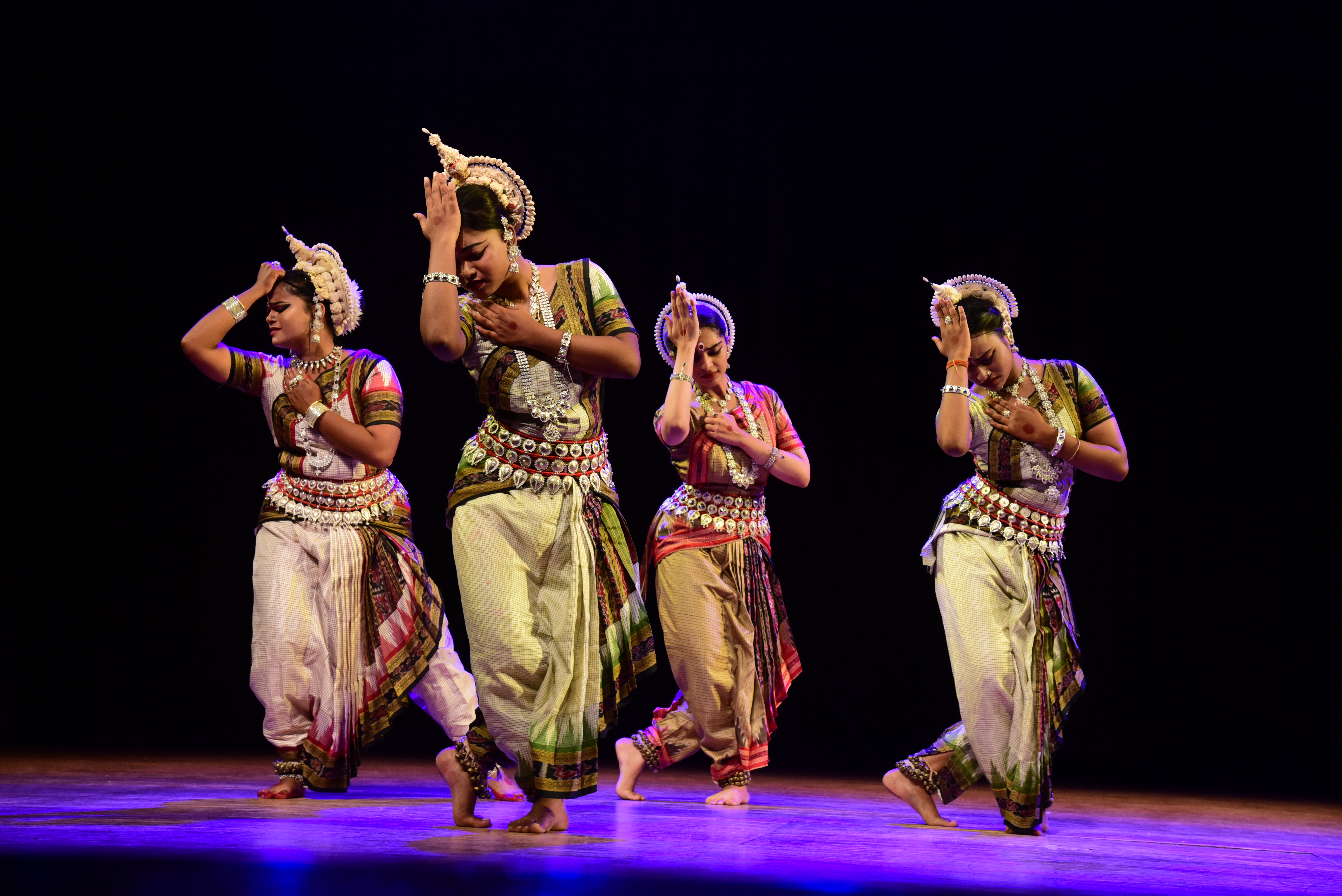
Click on Image for Video Clip
Duara Paka Nata
Duara Paka Nata (The Story of the Closed Door)- the item describes the verbal duel between Lakshmi and Jagannath on the day the Lord
returns to Sri Mandir the ninth day of the Rath Yatra.
Choreography: Ileana Citaristii
Music: Ramesh Das, Prateek Pattanaik
Ganga Nomami
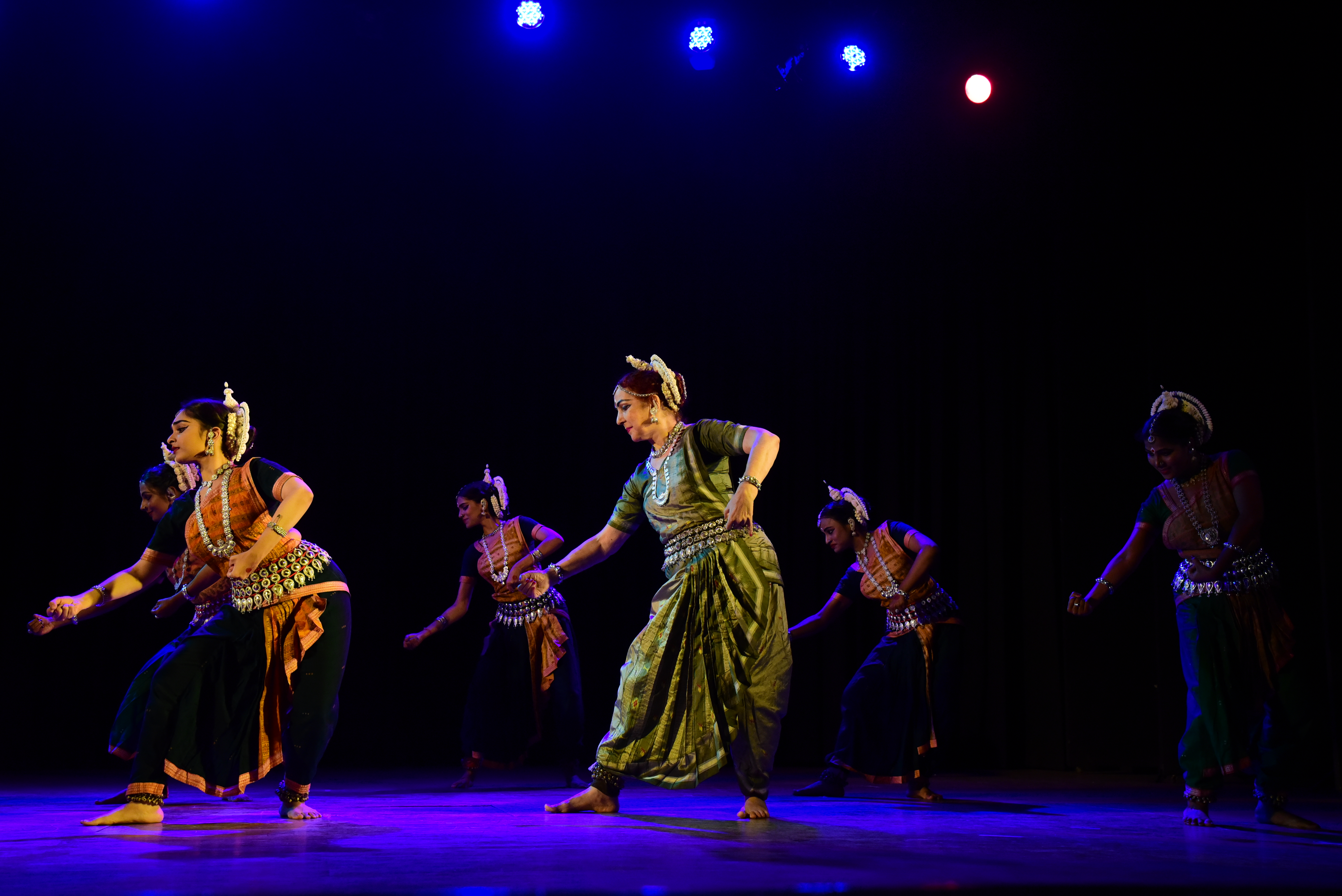
Click on Image for Video Clip
Ganga Nomami- an ode to the divine river based on Adi Shankaracharya shloka.
Choreography: Ileana Citaristi
Music: Roshan Dasgupta
|
2021
Sabda Swara Pata

Click on Image for Video Clip
Sabda swara pata pallavii
Raga: Ananda Kedari
Tala: Ektalii
An elaboration of four basic bhangi of Odissi dance: alasa, manini, taranga and biraja.i
Choreography: Ileana Citaristii
Music: Ramesh Chandra Das, Surendra MaharanaChoreography: Ileana Citaristi
Suta-The Thread
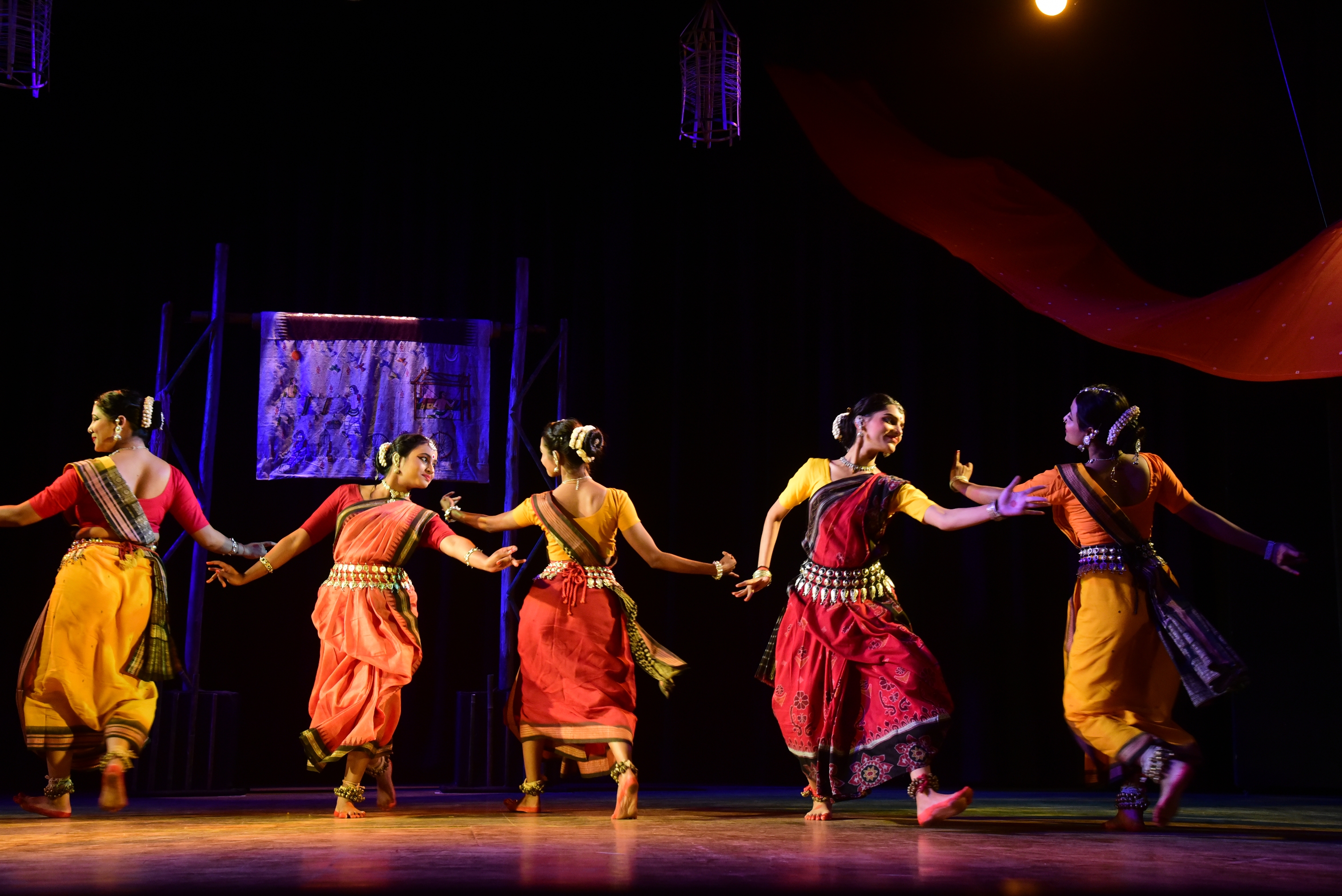
Click on Image for Video Clip
An ode to the hard labor of the Odisha weavers and to their exquisite creations.
Choreography: Ileana Citaristi
Music: Annada Prasanna Patnaik
Script: Devdas Chhotray
2019
Meghadootam

Click on Image for Video Clip
In this lyrical poem the two prominent features are Love and Nature, both blended with vivid imagination. Of Nature the poet describes birds, cranes, peacocks, flowers, mountains and rivers as miniature paintings and backdrops to the sentiment of deep love in separation. The advent of the monsoon season gives hope to the lover to be able to convey through a cloud a love message to his beloved who leaves far away in the Himalaya mountain.
Choreography: Ileana Citaristi
Music: Laxmikanta Palit
Rhythm: Satchidananda Das
2018
Refugee
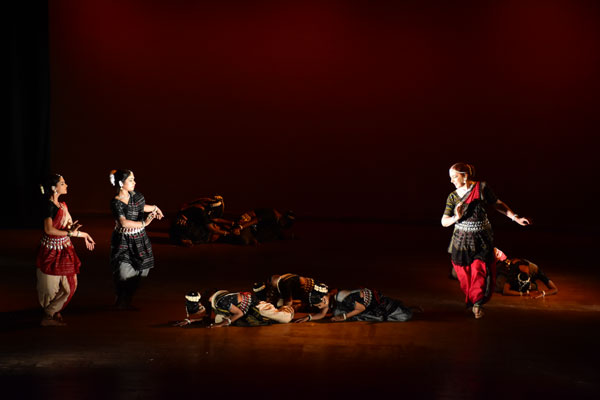
Click on Image for Video Clip
There was a time when man’s travel path was free like a bird’s flight. This world too was un-demarcated like the sky and the oceans. A traveller or a sailor was free to reside wherever he reached. The world has changed now. Victims of violence, religion and politics, thousands of innocent and non-aggressive people are becoming refuges every moment. Their earth is dissected, their geography is scuttled. They move on unremittingly in sand and snow, along the railways tracks and in shaky sailing boats. They have no address of their own. The landscape of the earth is now full of refugees.
Odia poetry: Devdas Chhotray
Choreography: Ileana Citaristi
Music: Laxmikanta Palit
|
2016
Akshara

Click on Image for Video Clip
'Akshara' is a poetic composition which captures dancing with the Odia alphabets in a mood of gaiety, both as dalliance and also as a homage to this rich and ancient language. It begins with the rituals of commencement of writing in any Odia village by drawing three circles on the dry mud with lime sticks. Those initial shapes and shadows of roundness denote the genesis of Odia alphabets and carve out in our minds the formless forms of our Gods and Eternity.
Odia poetry: Devdas Chhotray
Choreography: Ileana Citaristi
Music: Laxmikanta Palit
|
2014
Siddhartha

Click on Image for Video Clip
Hermann Hesse’s ‘Siddhartha’, written in 1922, is a book which, in the early 70’s, inspired a whole generation of young people on their spiritual journey in search of a deeper meaning of life. The protagonist, a young Brahmin, is in search of his self-realization and to reach this goal abandons the paternal home and takes to the life of a wanderer. But an ascetic life and shunning all temptations , does not give him a sense of fulfillment either. He experiences the highs and lows of the sensual pleasures, the lure of money and addiction to gambling, until, almost on the verge of desperation, he finally finds peace on the bank of a river, where an old boatman teaches him the meaning of life the way he has learnt it from observing and listening to the river. He directs Siddhartha to listen to the river and search within himself for an understanding of what the river says.
Odia poetry: Devdas Chhotray
Choreography: Ileana Citaristi
Music: Annada Prasanna Pattanaik, Sachidananda Das
|
2013
Gaia-Mother Earth

This Odissi-Chhau production is based on a folk tale meant to inspire love and respect towards mother Earth and exhorts men not to destroy the natural environment. The Moon wanders why the trees and vegetation which she is nurturing with love and affection are not bearing any fruit? Men are seen altering the natural course of rivers, plundering the womb of mountains, mining rocks, cutting trees, causing death and destruction to animals and vegetation. The Moon exhorts men to rectify their deeds; only by reconciling with Nature and by considering Earth as their own Mother they will be able to live a happy life.
Choreography: Ileana Citaristi
Music: Shanthanu Mohapatra
Date of composition: 2013
|
|
2012
KAALA- Time bound
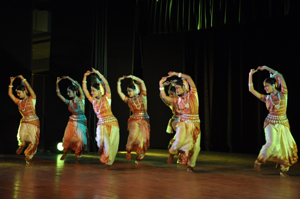
Click on Image for Video Clip
A dance
production on Time. It travels through different phases.
From the latent aspect of the unmanifested Time (‘hrdya
) to the first pulsation (spandan) or primary element to
organic life ( Time as creator).For man to comprehend
the movements of Time a language of geometry emerges:
linear lines, concentric circles, cones, squares and
triangles(Time as movement).
Profane Time is conceived as an arrow which travels
through past, present and future, the founder of history
whereas. Sacred Time travels in a circular path, the
path of myths and of the eternal return.
Time devours what he himself has created in an eternal
cycle of creation and destruction (Kaala-chakra).The
aspiration of Man is to reach a state of transience, to
reach a state of timelessness, to live in a perennial
Now. The image of the swan who finds its eternal home in
the celestial lake, tempted no more to fly off
elsewhere.
Concept and choreography: Ileana Citaristi
Music: Annada Prasanna Patnaik
Text: Devdas Chhotray
Rhythm: Sachidananda Das
Dancers: Sagarika Mohanty, Geethanjali Mohapatra, Sunita
Maharana , Pallavi Beriha, Anindita Parida, Upasana
Mohanty, Mousumi Mohapatra, Saswat Joshi, Rashmi Rekha
Das
Date of composition: 2012
|
2011
MAANA BHANJAN
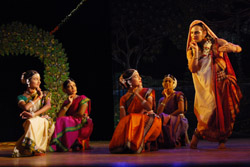
Click on Image for Video Clip
A traditional Odissi
dance-drama based on the original script by Babaji
Vaishnava Charan Das and Mohan Sunder Dev Goswami. It is
the story of the offended Radha, seductive Chandrabali
and repentant Krishna, who undergoes different disguises
in order to win back Radha’s trust; a classic belonging
to the preliminary stage of the Odissi revival. Behind
the dramatic plot, which has elements of pathos as well
as comic overtures, lies the philosophy of total
surrender and final merging of the individuals into the
universal soul , propagated by the Vaishnav faith.
CREDITS:
Choreography : Ileana Citaristi
Music: Laxmikanta Palit
Rhythm: Sachidananda Das
Dancers: Ileana Citaristi, Saswat Joshi, Pallavi Beriha,
Sagarika Mohanty, Sephalika Nayak, Rajhasri Prusty,
Minati Mohapatra, Upasana Mohanty, Mousumi Mohapatra
Duration: 52 min
Year of composition: 2011
|
2010
KARUNA
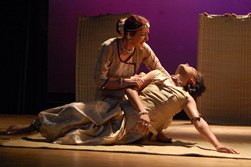
Click on Image for Video Clip
Odissi
presentation inspired by Mother Teresa’s life
This is the story of a
woman who, at a certain point of her life, leaves
everything behind to follow a call towards the unknown,
carrying with her only her unshakable faith and her love
for the poorest of the poor, the dying people abandoned
on the road, the children without parents and the hungry
humanity.
From one she became many, hundreds, thousands who wanted
to follow in her holy path. She conquered even the
priests of the Kali mandir who saw in her the
reincarnation of the true ‘mother’. She has been able to
celebrate life in all creatures especially in those most
neglected and less considered by society. The dance
composition is an humble tribute to her, Who else she
could be if not Mother Theresa?
CREDITS:
Concept, choreography and costumes: Ileana Citaristi
Music: Laxmikanta Palit
Lyrics: Devdas Chhottrai, Prafulla Kumar Mishra
Dancers: Ileana, Citaristi, Saswat Joshi, Pallavi Beriha,
Sagarika Mohanty, Anindita Parida, Minati Mohapatra,
Upasana Mohanty
Lights: Dologobindo Rath
Year of composition: 2010
|
2009
Jalai rakha- A lamp somewhere
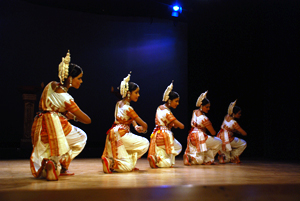
A modern Oriya poem which
exhorts us to keep alive a flame symbol of hope also in
the worst dark situations which life may offer.
“Whenever darkness seems to submerge you, sailing in the
black ships of waves or it grows mighty like a gail to
touch the horizon of your desolation, if you remember me
then, I will tell you in secret to keep glowing a lamp
somewhere, a shift of light which refuses to die” says
the poet.
Lyric by: Devdas Chhotrai
Music: Laxmikanta Palit
Choreography: Ileana Citaristi
Date of composition: 2009
|
|
Partha Sarathi or the Divine Charioteer

The immortal sermon
delivered by Lord Krishna to Arjuna in the battle field
of Kurushetra, the Bhagavad Gita, is a lesson of life
which still stands meaningful in today world. “ As the
ignorant performs action being attached to it even so,oh
descendant of Bharata, should the wise perform action
unattached, desiring the welfare of the world.
Renouncing all actions in me, with your mind resting on
the Self and giving up hope and idea of ownership, fight
being free from doubts”
Music: Ramahari Das
Choreography: Ileana Citaristi
Date of composition: 2009
|
|
2008
Sparsh (touch)
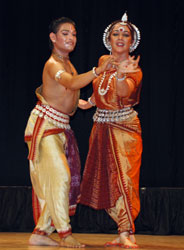
A joyful
interplay of movements and rhythm between two dancers..
They respond to the rhythm created by the percussion and
at the same time create their own rhythm by contact with
each other.
Choreography: Ileana Citaristi
Percussion: Budhanath Swain
Date of composition: 2008
|
|
Pallavi
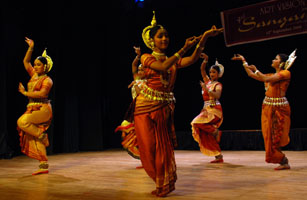
Click on Image for Video Clip
Elaboration of melody,
rhythm and choreographic patterns in space. A soft
blossoming forth of music and dance ending in a
crescendo. This pallavi is in raga Belahari and Tala
Ektali.
Music composition:
Laxmikanta Palit
Dance choreography: Ileana Citaristi
Date of composition: 2008
|
|
Mahanadi…and the river
flows
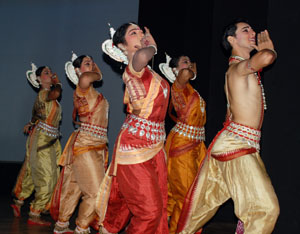

Thematic presentation
based on the saga of the great river of Orissa, cradle
of Oriya culture. Although it originates in Chattisgarh,
the Mahanadi is almost synonymous with Orissa, its
history and geography. In this production various myths
related to places which are located along its course are
depicted. Like the myth of Sabari who waits for Lord
Rama in the kantak bana or forest of thorns situated on
the bank of the Mahanadi. Or the story of Visuavasu who
worships the tribal god Nila Madhava in Kontilo, a small
hill inside the river. And the story of Lord Jagannath
who was carried along the river upto to Patali Cuttack
to escape from the ire of Kalapada. In the past the
Oriya merchant used to start their journey from Cuttack
along the Mahandi to reach the faraway land of Indonesia
on the full moon night of the month of Kartika.
Lyric by: Devadas
Chhotray
Music: Laxmikanta Palit
Choreography: Ileana Citaristi
Date of composition: 2008
|
|
2007
Bolero
:(group)

An Odissi rendition of the famous music
score of Maurice Ravel, which has inspired choreographers and dancers
all over the world.
Music by: Maurice Ravel
Choreography by Dr Ileana Citaristi
Year of production: 2007
Tarana:Rhydhum
(duet)
A joyful item of pure dance. The two
dancers keeps pace with the creative interplay of rhythm and voice of
the Hindustani musical composition.
Raga: Yeman Kalyani
Tala: Adi Tala
Music by: Taufiq Qureshi
Choreography by Dr Ileana Citaristi
Year of production: 2007
|
|
2006
Karpasa, the cotton plant (dance ballet)
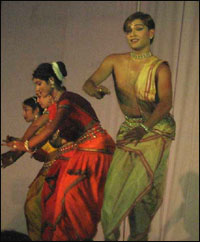
This is a
dance production based on the environmental issue of ‘agro-biotechnology’ or
eco-friendly relations between man and nature. It has been conceived and
produced on the occasion of the first conference on agro-biotechnology held in
Hyderabad in March 2006. The Moon is looking down and commenting about the fate
of the crops which used to be healthier before and asks: Why is it so? The
farmers are seen, arresting natural course of water, excavating mountains,
planting seeds, spraying chemicals for better profits etc. The Moon is
continuing his monologue: Why should Mother Earth give fruits? Her breast is
aching, her womb is in pain, she curses the farmers and this is the cause for
bad crops and depression and cases of suicides among them. She exhorts the
farmers to threat Mother Earth with gentleness and care instead of greed and
harmonize with her resources. Farmers understand their mistakes; change
attitude. The cotton tree starts again to give its white flowers and farmers
celebrate.
Script: P. K Misra
Music: Shantanu Mohapatra
Dance choreography: Ileana Citaristi
Date of composition: 2006
|
|
EXPLORATION
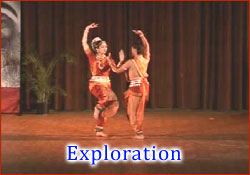
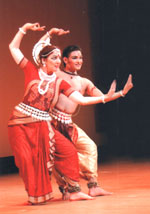
Click on Image for Video Clip
An item of pure nritta. A joyful play between two
dancers who explore the space around the central gravity point in alternate
movements of attraction and expansion.
Credits:
Choreography: Ileana Citaristi
Music: Laxmikanta Palit and Ratikant Mohapatra
Date of composition: 2006
|
|
Tantra (duet)
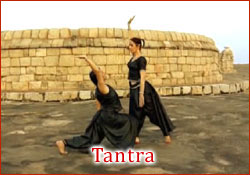

Click on Image for Video Clip
The item has three sloka from the Saundaryalahari, the
tantric text dedicated to the female energy. This item visually represents the
ascent of the kundalini in its snake-like form from the Muladhara chakra upto
the Sahasrara or the thousand petalled lotus where she sports with the male
principle and her descend to her original abode, the Muladhara where she turns
herself into a serpentine coil.
Music composition: Sri Gopal Panda
Dance composition: Dr Ileana Citaristi
Date of composition: 2006
|
|
Saraha
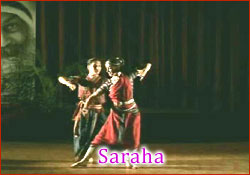

SARAHA, is
inspired by the tale of Saraha, the founder of the Tantric discipline in the
Tibetan region. Saraha means ‘one whose arrow is shot’. Saraha is in search of a
master; he symbolises the man who has lost the contact with the natural part of
himself. ‘ The learned has to go to the vital. The plastic has to go to the
real’ as Osho says. Saraha finds the real master not in the learned or in the
ascetic but in a low cast woman who is totally absorbed in cutting an
arrow-shaft in a market place.. The arrow ready, the woman, closing one eye and
opening the other, assumes the posture of aiming at an invisible target. There
is no target, still she is wholly absorbed in aiming the arrow. The aiming
itself is the target. The non dual is the aim Realizing this, seeing into the
woman’s action, Saraha totally surrenders to her. They celebrate their union,
dancing together in a cremation ground. Where death is,they celebrate life. This
is the beauty of Tantra- it joins together the opposites, the contradictories.
Music by: Sri Anwar Khurshid
Choreography by Dr Ileana Citaristi
Year of production: 2006
|
|
2005
Chitrangada (Duet)
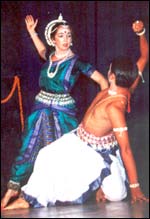
Click on Image for Video Clip
The episode of Arjuna and Chitrangada is described in the last canto of
the Mahabharata, after the end of the great war.
Chitrangada, daughter of king Parbata, has been brought up as a son by
her father who, deprived of any male issue, decides to make a courageous
warrior out of her. Since childhood she is denied to play any girl games
and spends her youth among the soldiers exercising her skills in
handling different weapons..
When Arjuna's white horse reaches the kingdom of Manipura challenging
the king to surrender or else to fight with his general, the king sends
his daughter to the battle. She fights valorously and defeats the
enemies with great strength and courage..
Arjuna from afar sees the valorous and handsome general and he is
pleased to have found an enemy worthy of him. They challenge each others
and after finishing the horse and sword fighting, the two warriors
engage in wrestling. At the contact of each others' bodies, their eyes
merge and lost in each other's sight, they fall in love..
Through the experience of love Chitrangada for the first time is able to
discover the feminine part of her nature which had been denied to her
since childhood..
Dance composition: Dr Ileana Citaristi
Script: Dr Prafulla Kumar Mishra
Music composition: Sri Gopal Panda
Date of composition: 2005
|
|
Abhinaya: Ganga-Yamuna (Duet)
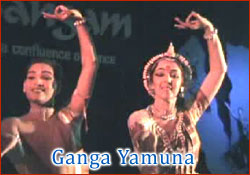

Click on Image for Video Clip
The confluence of turbulent Jamuna and luminous Ganga is described by
poet Kalidasa in the XIII canto of his poem 'Raghuvamsa' as if two
different strings of blue sapphires and white pearls are strung
together; or like a garland of white lotuses which has blue lilies
interspersed in between.
The blue and white waters of the two rivers are described as formations
of white and black swans directing themselves towards manosaravara lake
or as designs of black and white sandal paste painted on earth.At times
it appears as if in the Autumn sky among groups of white clouds patches
of blue sky are visible.
The currents of Ganga separated by the influx of the waves of Jamuna,
are like the ashes-besmeared body of Shiva on which black and dangerous
cobra are playing.
Dance composition: Dr Ileana Citaristi
Music composition: Sri Gopal Panda, Guru Banamali Maharana
Date of composition:2005
|
|
2004
Shivasthakam (group)
In this item the dancers pay homage to Lord Shiva, the Creator and
Destroyer of the universe,, from whose hair the river Ganga is flowing,
whose body is adorned with snakes and skulls and whose wife is goddess
Parvati. The Sanskrit poem is written by the saint poet Shankaracharya.
Dance composition: Dr. Ileana Citaristi
Music composition: Sri Ramesh Chandra Das, Guru Banamali Maharana
Date of composition: 2004
|
|
2003
Kapalika Shiva (trio)
The item is in honour of Kapalika Shiva, by whose destructive dance the
Universe is renovated at the end of each yuga, who, out of grief for
Sati’s death, destroys the sacrifice of her father Dakshya; who enjoys
playing with Parvati on the pick of Mount Kailasa and who makes the
skulls by which is garlanded, resounding during his dance. To that
Kapalika, whose wife is the black goddess Kali and whose neck is black
like the river Yamuna, the dancers ask for prosperity and blessing.
Dance composition: Dr Ileana Citaristi
Raga: Malkaus, Tala: Jhampa
Music composition: Sri Profulla Kar
Date of composition: 2003
Pallavi (group)

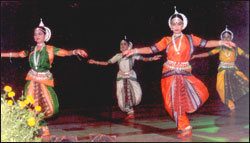
Click on Image for Video Clip
The pallavi is an item of ‘nritta’ or pure dance where lyrical music is
interwoven into the fabric of body movements. A soft blossoming forth of
music and dance ending in a crescendo. The pallavi is a distinctive item
of Odissi dance. It is a creative elaboration which flows along and
heightens the unique character of a raga. It works up effects mainly
through rhythmic variations and cyclic patterns.
Dance composition: Dr. Ileana CitaristiRaga Kolavati and tala Tripata
Music composition: Sri Ghanashyama Panda, Guru Banamali Maharana
Date of composition: 2003
|
|
2002
Abhinaya (Duet)
‘Madhura vachana kohonti Mohana’ written by poet Bonomali.
Krishna tries to defend himself from Radha’s accusations but Sri Radha
is not won over by his lies and sweet words; she tells him:’ how is it
that your face is pale, your eyes are so sleepy, your cloths are torn
and your chest bears black marks? With so many marks which reveal your
infidelity, how can you think to convince me with your sweet words?’
This song is set to raga. ‘suddha desi’ and tala ‘khemta’.
Dance composition: Dr. Ileana Citaristi
Music composition: Sri Ghanashyamo Panda
Date of composition: 2002
|
|
Dasa Mahavidya
(group)
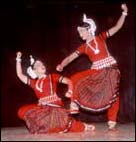
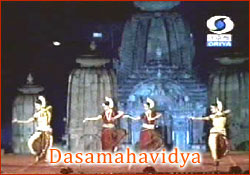
Click on Image for Video Clip
Dasa
Mahavidya’ or the ‘ten forms of supreme knowledge’ depicts the ten
incarnations of Devi according to the tantric school of Indian
philosophy. In this item each form of Devi is presented through a brief
visualisation of her myth of origin followed by the description of her
anthropomorphic form. The ten incarnations are: Kali or the ‘black
goddess’, Tara ‘who guides us across the sansara’, Tripura Sundari ‘who
is lovely in the three worlds’, Bhuvaneswari ‘ whose body is the world’,
Chinnamasta ‘the self-decapitate one’, Bhairavi or ‘the fierce one’,
Dhumavati ‘born out of smoke’, Bagalamukhi ‘who paralyses’, Matangi
‘whose limbs are intoxicated’ and Kamala ‘the lotus goddess.
Dance composition: Dr. Ileana Citaristi
Music composition:Sri
Ramahari Das, Guru Banamali Maharana
Date of composition: 2002
|
|
1993
Maya Darpana (dance ballet)
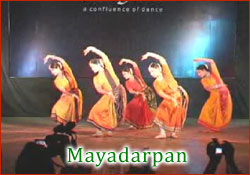
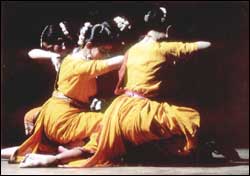 Click on Image for Video Clip Click on Image for Video Clip
The concept of Maya in Indian philosophy is as metaphysical as poetic.
Maya Darpan, the choreographic composition based on the Odissi style,
has been inspired by the poetic treatment of the concept of Maya in
various Upanishads.
In the first scene we are facing the watery surface of the Timeless
Being; the moment ‘Time’ or ‘Rhythm’ creeps in, the dimension of ‘Space’
takes shape and ‘Prakruti’ or Nature is born.
From the cosmic union between ‘Prakruti’, the female principle and the
male cosmic being, generations of creatures are born. All are limbs of
the same body, but they look as separated and individual beings. Through
the deception of the five senses, the original oneness is lost into a
myriad of experiences which form the insatiable hunger of our lives.
Until tired of this endless run, man looks inside himself and
rediscovers the original unity of all.
Concept and script: Sri Jivan Pani
Dance composition: Dr. Ileana Citaristi
Music composition Sri Partho Das
Date of composition: 1993
|